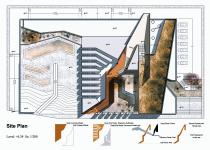Context:
Iraq On June 28, 1987, dropped mustard gas bombs on Sardasht in Iranian Kurdistan, in two separate bombing runs on four residential areas. The numbers of victims were initially estimated as 10 civilians dead and 650 civilians injured. Out of a population of 20,000, 25% are still suffering from severe illnesses. The gas attacks occurred during the Iran–Iraq War, when Iraq frequently used chemical weapons against Iranian civilians and soldiers.
Out of 12,000 inhabitants, according to official reports, 8,000 were exposed. Of the 4,500 requiring medical care, 1,500 were hospitalized, 600 of them in Tehran. The other 3,000 were treated as outpatients and discharged. Many of these 3,000 former outpatients left the city for the villages and attempted to treat themselves, using traditional medicines, etc. These people do not have medical records of their exposure and now are having difficulty obtaining government benefits.
"Sardasht Chemical Victim Society" is planning to erect a memorial museum in order to attract world-wide attentions to not only take action on behalf of victims but also avoid such tragedies in the future.
Main Concept:
The main and initial form-concept of "lonely-tree" comes from site-analysis and a lonely Oak tree (Oak tree is a native tree species in Sardasht) which is situated in front of our proposed site, on top of a hill overlooking the city.
Museum's lonely Oak tree as a symbol of victims was placed in a solid concrete, as if it pretends to live, in dialogue with another off-site lonely tree which has witnessed the whole tragedy over the years.
Storyboard:
Firstly, user is encountered with a solid form which seems mysterious and tend to attract rather than invite users. In the first steps, users will be involved in finding the entrance. Several entry routes tend to confuse users and memorize the early hours of the bombardment where people couldn’t find their ways, their darlings and didn’t know what to do. Once user enters, drowned bodies as death metaphor will revive what has happened. In the midway in-site lonely tree will talk about today's victims, their hard breathing and other continuous sufferings. In-site tree's location is a pivotal point where different directions have different meanings. Turning right, there is dead-end glass-way to children playground. Disability of hearing and accessing children will talk about victims' disability of breeding healthy children, due to genetic problems caused by chemical weapons. Straight upward direction, takes users to the green roof, where an overview of the city and its pure nature inspire a promising future for the next generation.
After in-site tree, there is a turning point before getting to the lobby which draws users' attention to off-site tree through a vertical window wall. After reviewing the main points of the tragedy, users will be led to galleries, associations' offices, library and laboratories.
Memorial Museum of Sardasht Chemical Bombardment
Location: Sardasht-Iran
Author Architects: Samira Aslani; Prof. Bakhtiar Bahrami
Site Area: 4700 m2
Building Area: 2300 m2
Date: Jan 2018
2018
Data set is not permitted to publish.
Author architects: Samira Aslani &Prof. Bakhtiar Bahrami
Favorited 6 times




















